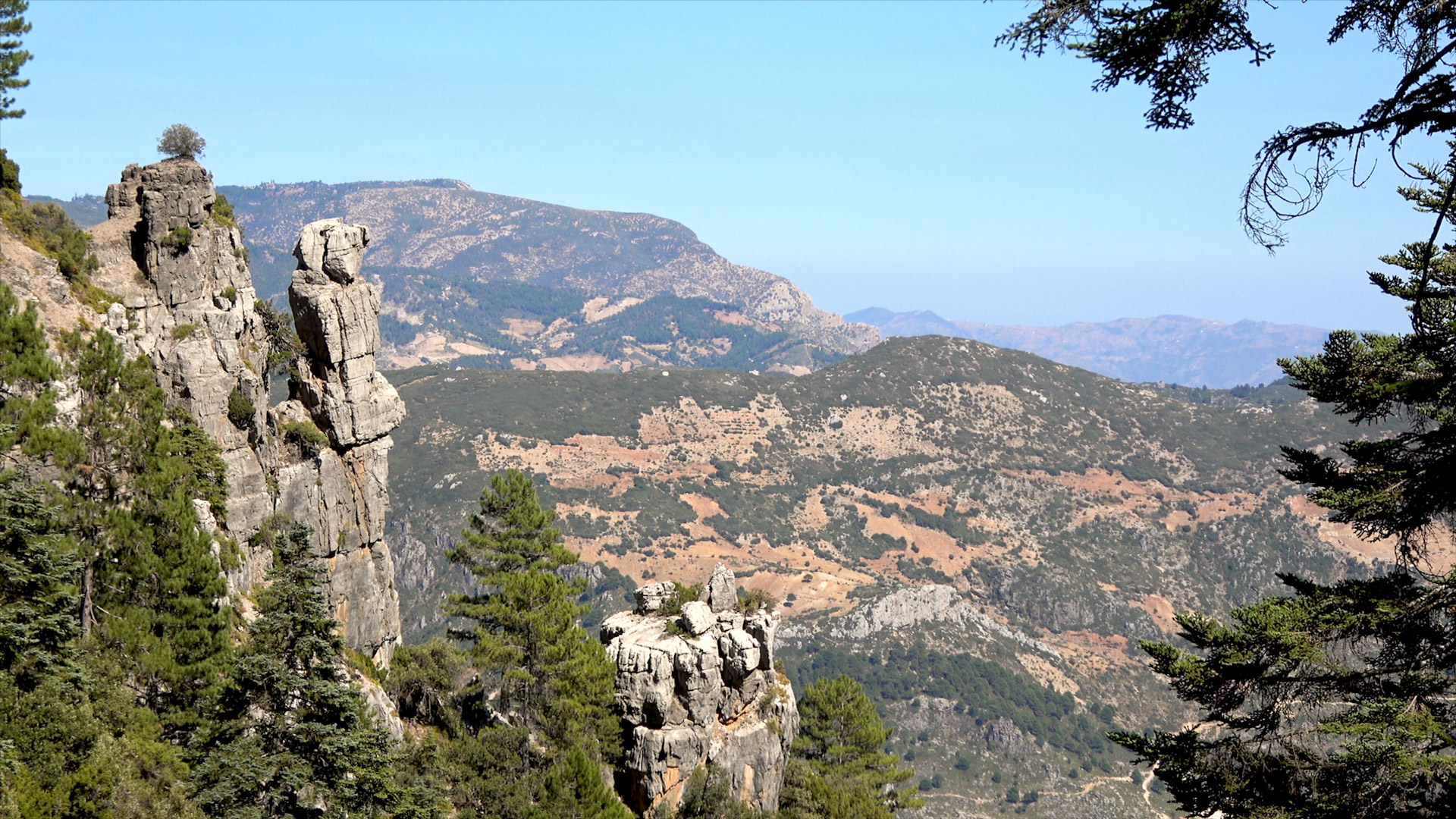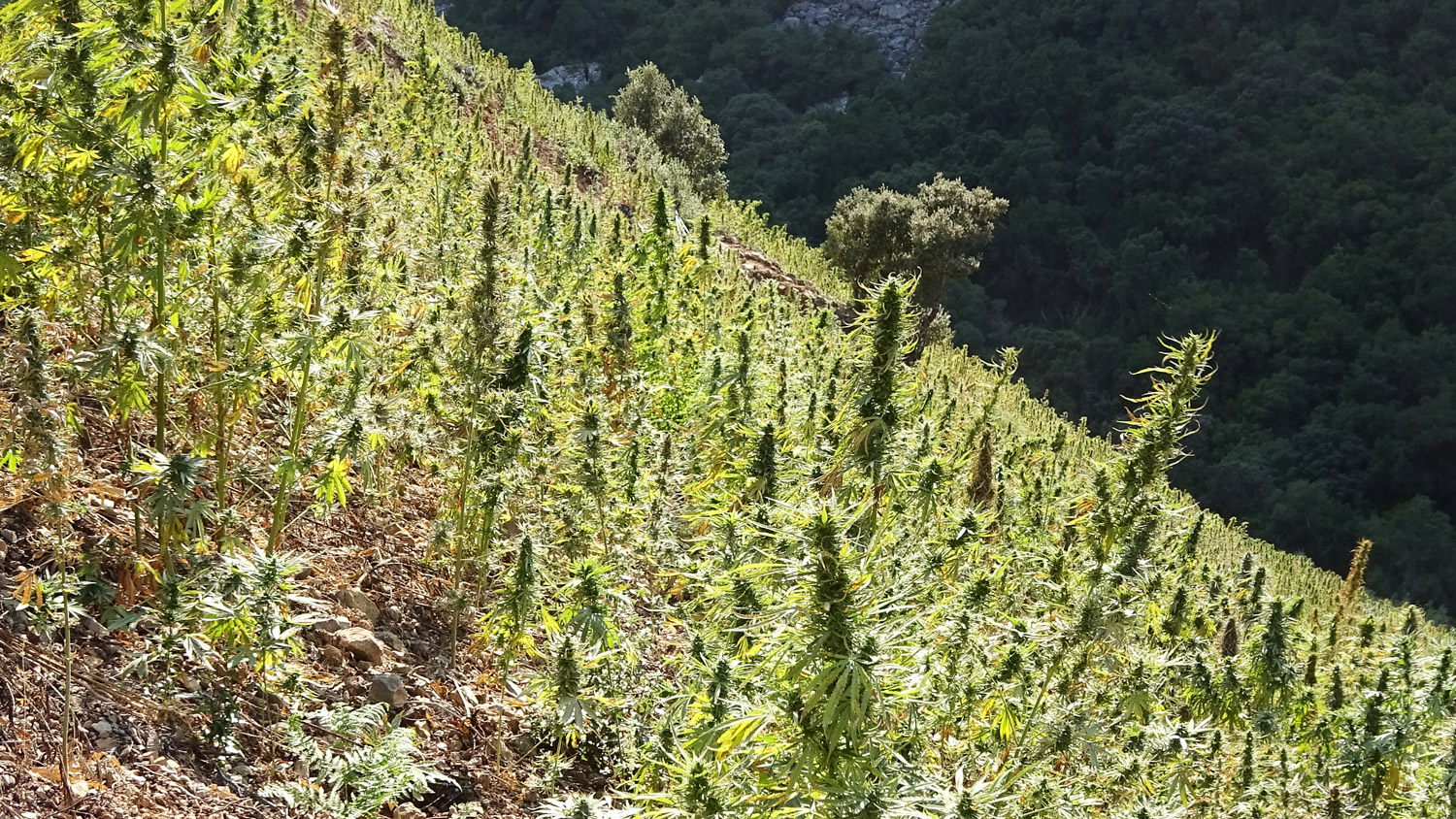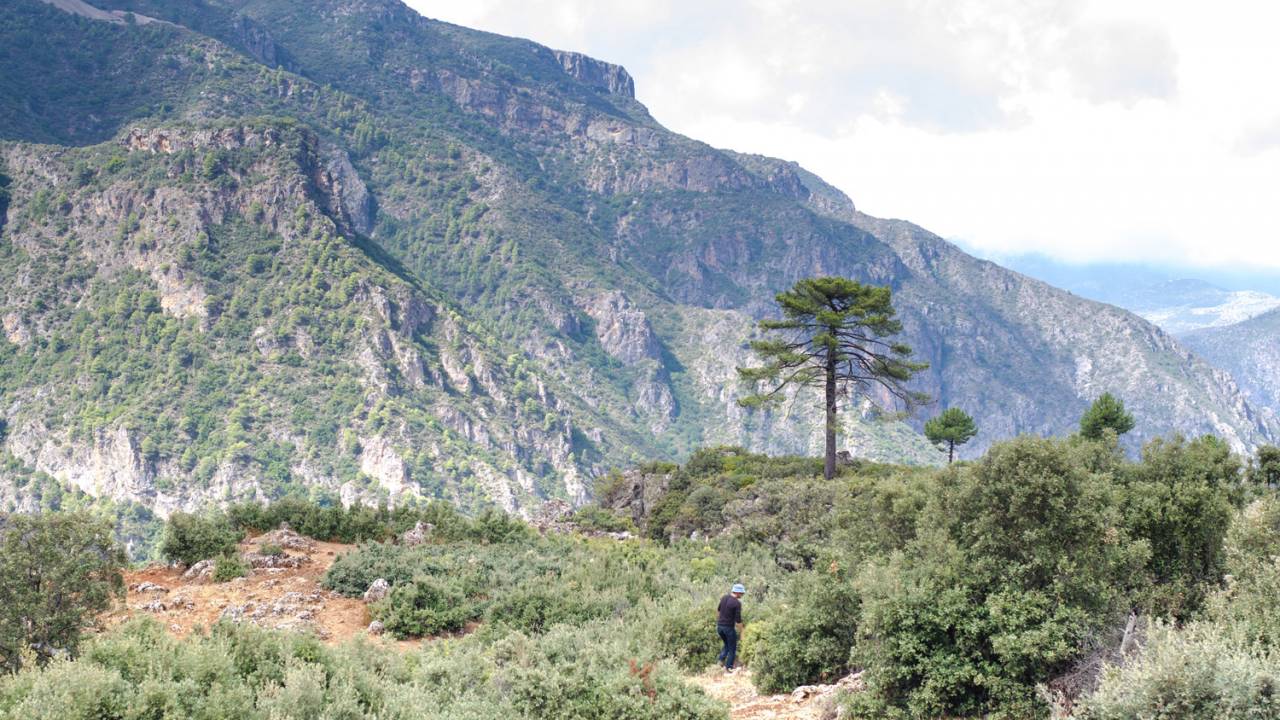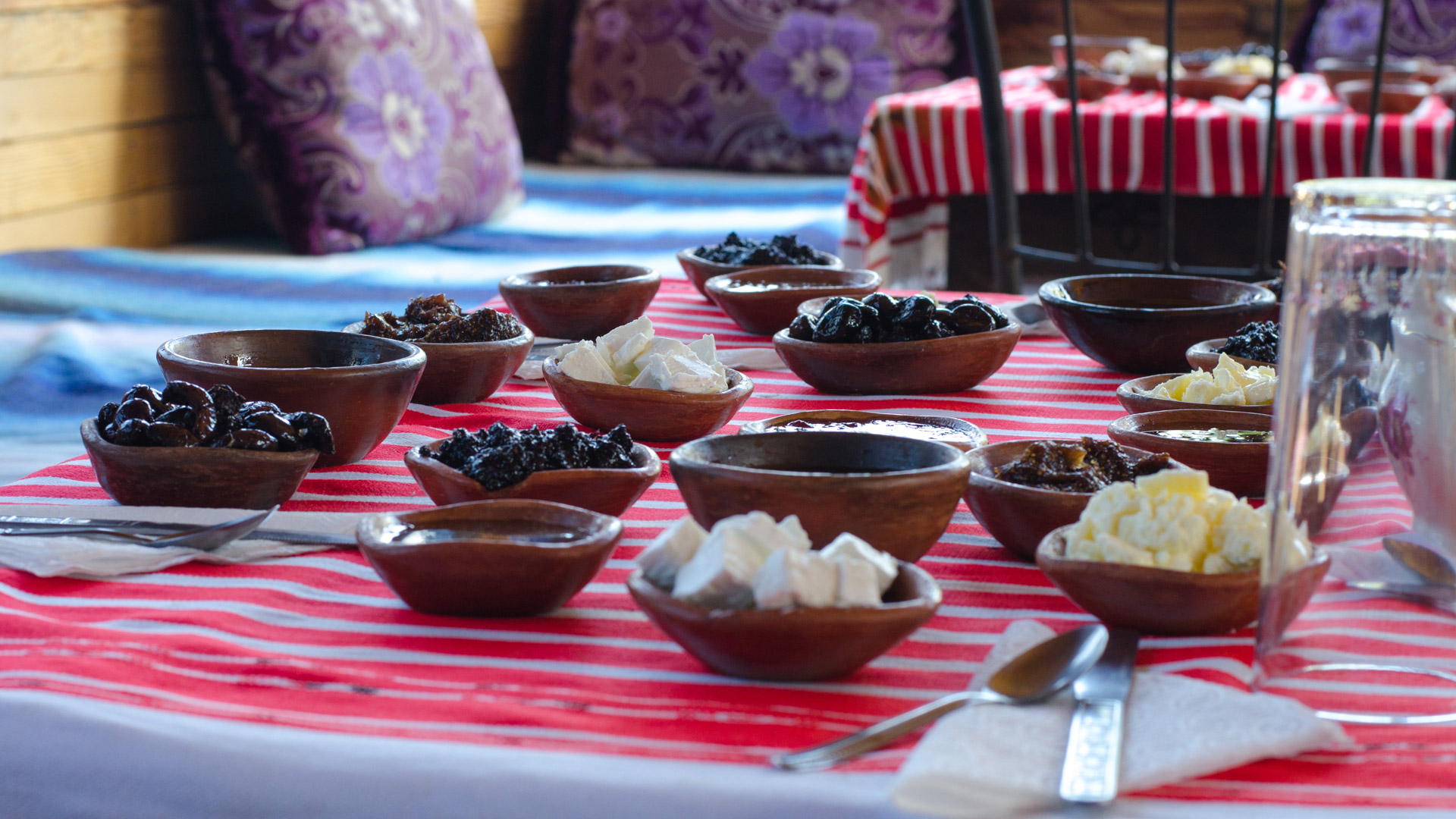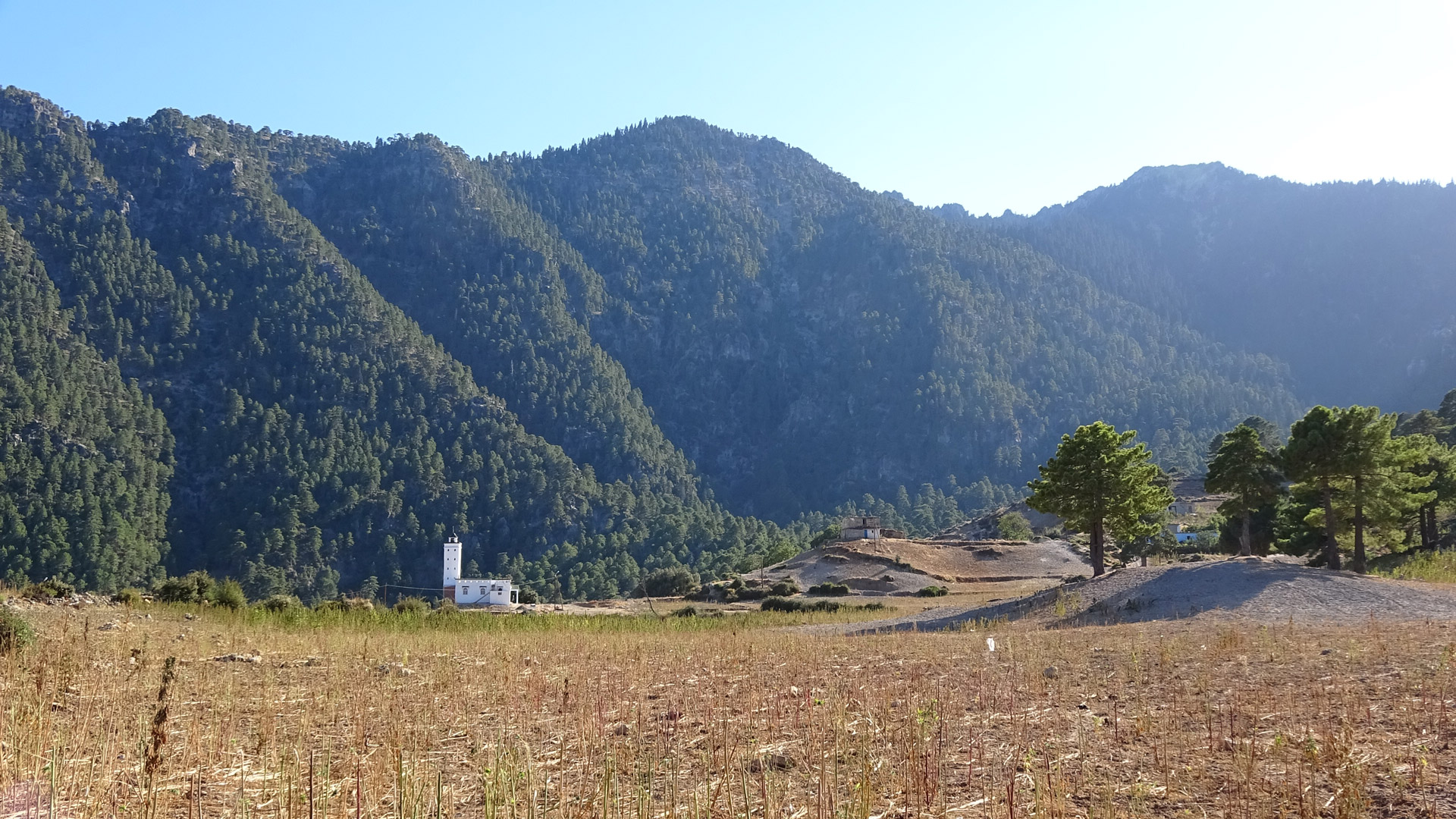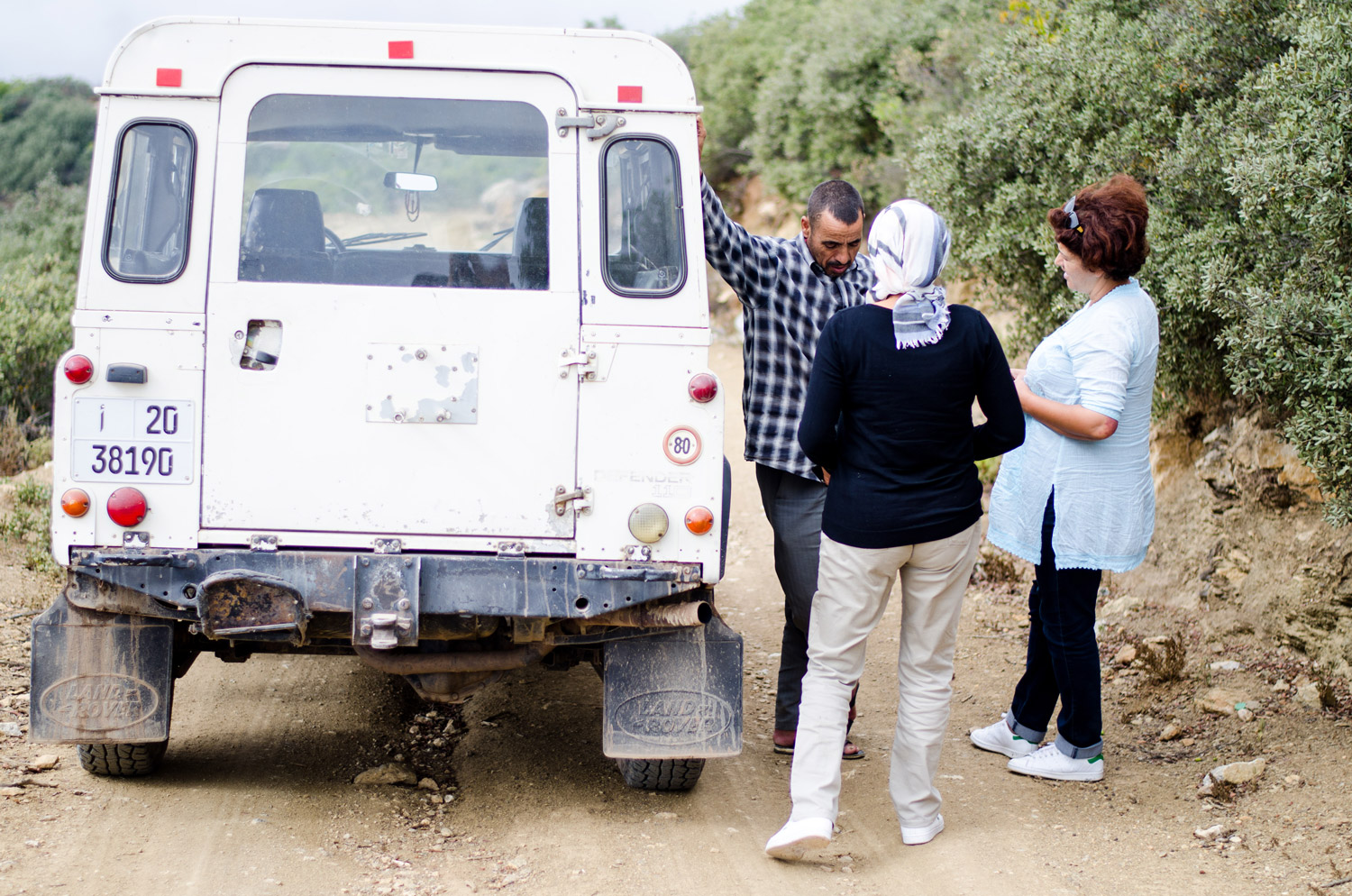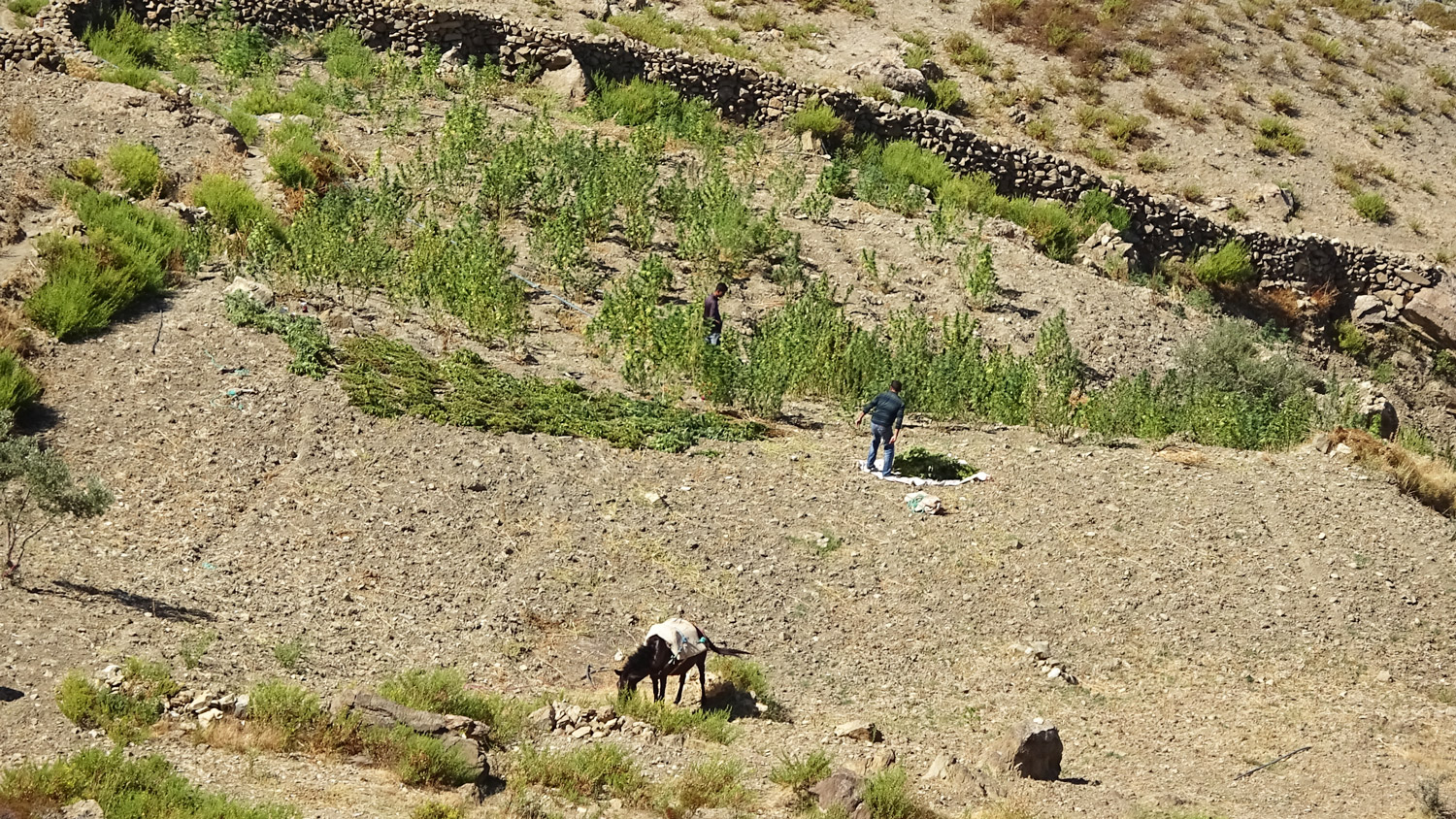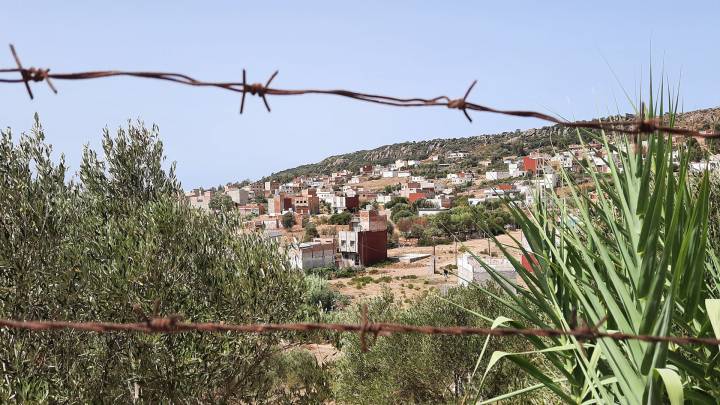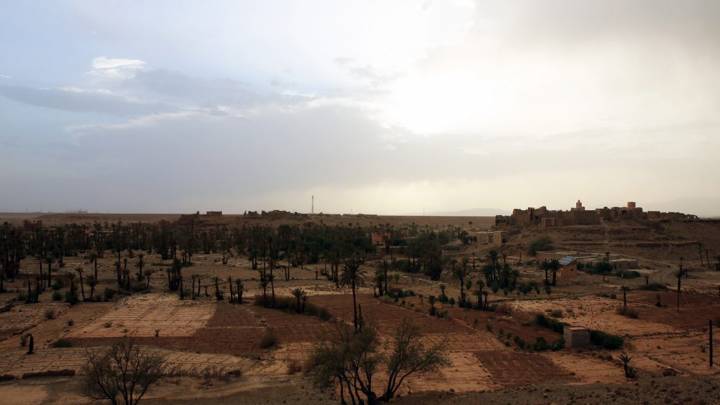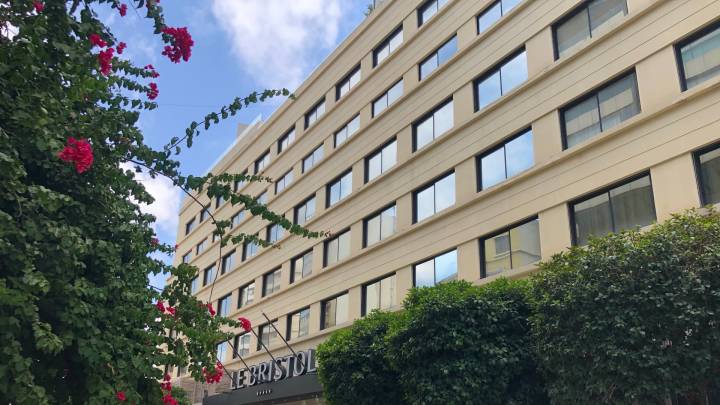In Morocco’s Rif mountains, visions of a community-based sustainable tourism economy are being weighed down by hardships familiar to the region.
Sitting under a trellis of grapevines in the warmth of the morning sun, Abdelkader Hamoudan thumbs through an old visitor’s log in the corner of his salon. The entries document the large number of visitors who have stayed here at his family home, a modest lodge – or gîte – in Azilane, a tiny village in northern Morocco’s Rif Mountains.
Australia, Germany, Israel, Japan and Peru – Hamoudan’s grin widens each time he reads out one of the less common countries of the thousands of people who have passed through here.
When people in neighbouring villages refer to Azilane as the “grandfather of the mountains”, they could easily mean Hamoudan, who has been welcoming visitors for 30 years. He proudly calls his guesthouse – and family home – the Rif’s first tourism project.
Tourism is a life experience. It’s about the love you have for strangers and the people who visit you.
The Rif mountains stretch from Tangier in the west to the Algerian border in the east. Apart from their natural beauty, the mountains have long been known for their marijuana fields. It was once a traditional crop, and Morocco – specifically the Rif – is still the main foreign source of hashish smuggled into Europe. The plant has long been a source of curiosity and excitement for international tourists – Hamoudan noticed the first long-haired hippie tourists arriving in the area in the 1970s.
Today the gîte owners want to dispel the idea that marijuana is the key attraction. Hamoudan, who refers to the tourists who stay with him as family, believes there is growing interest from those who want to have an authentic experience discovering the mountains and the people who live here. “Many people say that tourism is about money, but no, that is not the case. Tourism is a life experience. It’s about the love you have for strangers and the people who visit you.”
But despite the optimism, business for rural tourism in the Rif is often slow. Gîtes may go days or even weeks without receiving visitors. Fatima Habte, a local tour guide and owner of Gite Talassemtane on the border of the national park of the same name, complains that not enough tourists step outside Chefchaouen, the major local town.
It’s not just a blue town, there are many natural and cultural resources.
Famed for the blue and white walls of its old medina and its winding narrow streets and stairwells, Chefchaouen is framed by a mountain peak that towers over the town. Everyday, masses of tourists shop for home-made crafts, eat tagines at local cafés and take numerous photographs in front of picturesque alleys and doorways, all at a leisurely pace.
Venture out of the town and into the mountains, and a different labyrinth emerges. Mountain passes snake across a landscape of cascades, gorges and some of the African continent’s rarest forests, with endangered species such as the bearded vulture and the Barbary macaque monkey.
But gîte owners complain that very few tourists do in fact leave Chefchaouen, or venture further than attractions that are situated on the main highways. During a full-day hike nearby – the six-hour trail is listed in the Lonely Planet guidebook – we encounter only two other hikers, a pair from Israel. One reason may be poor infrastructure. Many of the areas’ roads are difficult to traverse without four-wheel drive, and some gîtes lack the internet connections needed to manage online booking services.
There are also other, more local issues. Some walking paths are poorly marked and there is a lack of qualified mountain guides, coupled with a language barrier for tourists who don’t speak Arabic, French or even Spanish. The widespread illegal cultivation of marijuana can also be off-putting for tourists, notes Sietske de Boer, a Dutch journalist and tourism consultant who has led tourists on treks in the area.
Perhaps the bigger issue is simply awareness. Much of Habte’s work entails simply trying to inform tourists of the possibilities in the area, she says. “Even the people who live in Chefchaouen can often forget what is available to them here.”
But the town’s soul rests in the countryside, she says, turning to the mountains. “You should try to explore and go beyond the blue. It’s not just a blue town, there are many natural and cultural resources.”
The neglected Rif
Bad roads and spotty internet connections are just the tip of the iceberg when it comes to the infrastructure deficit in the Rif, one of Morocco’s most underdeveloped regions. Schools, hospitals and industry are also lacking. For many residents that means there is little chance of finding a stable, well-paying job, unless they move elsewhere.
The resulting hopelessness and frustration bubbled to the surface in October last year when protests broke out in Al-Hoceima, a city in the north of the Rif. They were sparked by the death of a fisherman, Mouhcine Fikri, who was crushed in a garbage truck’s compactor while trying to retrieve fish that had been confiscated by police.
The unrest his death triggered was widely seen as a protest about the lack of development, explains Mohammed Chtatou, a professor at Mohammed V University in Rabat. “The event opened the floodgate. The people of the Rif said, ‘We want development – real development, not just promises.’”
Many northerners feel they have been deliberately shut out of modernisation programmes and public services, excluded because of the Rif’s contentious political history with Morocco’s central government (people still remember the insult of the previous Moroccan king calling Rifians “savages and thieves” in a televised address in the 1980s). People are unsatisfied with the slow pace of change, says Chtatou. “The current government should be doing more to build confidence, and that’s just not happening.”
Many residents we speak to in the villages around Chefchaouen say they see little hope of earning a living outside of the mainstays of tourism or marijuana, unless they leave the region. And even the tourism around Chefchaouen is centred on a small area, and hotels in the medina are increasingly foreign-owned, pushing out local business owners.
Gîte owners like Habte see rural tourism as an opportunity to improve their communities and provide an alternative income to the ubiquitous marijuana crop. They are hoping to build a sustainable rural tourism economy where visitors can eat local organic food, tour nearby cooperatives and farms, participate in traditional art courses and hike the trails with local guides.
Every year thousands of visitors come to the Rif, and Morocco’s Ministry of Tourism has identified local target areas to help develop the country’s rural and ecotourism sectors. By 2020, Morocco aims to be the Mediterranean’s primary sustainable tourism destination.
However, gite owners complain that many of the infrastructure issues that undermine their industry could be easily resolved with more financial and technical support for Morocco’s tourism and development bodies.
“We would like to have more tourists, but without a reliable internet signal we instead depend on word of mouth or on passing backpackers for most of our business,” explains Soumaya Massan of Gite Afaska. Her family opened their doors in 2009 with assistance from a local development organisation, but like their peers, they await improvements. Habte complains that the roads to her guesthouse can only be traversed with a large four-wheel drive vehicle.
“At the moment there really isn’t a state policy concerning rural small-scale tourism,” says de Boer, observing that the gîtes are currently left to confront their challenges alone, despite commitments from Moroccan tourism authorities. “They are not really looking at how to develop rural tourism in the north.”
Now gîte owners across the Rif are coming together to address their challenges. In September, joined by a collective of Moroccan environmental activists and academics, representatives of international NGOs and national park officials, they gathered at an ecotourism workshop at Habte’s guesthouse. They proposed creating a regional federation for the Rif’s rural guesthouses, to support one another, increase the sector’s profile, and advocate for government support.
Topics of conversation moved between trash collection, state tourism policy, and what a sustainable tourism project in the Rif is and how it should appear. While they agree that their initiative for a rural tourism network is ambitious, they see their efforts as necessary for their region’s future. At stake is more than mere increases in tourism figures – at stake is the long-term preservation of the Rif’s natural and cultural heritage, and the region’s public image.
As attendees gathered in the outside courtyard of the Gite Talassemtane to say their goodbyes, they had settled on a name for their new group: The Federation of Gîtes in North Morocco.
“My aspiration is that the region will become more known and more popular for people who want to go make a hike there, and that this will bring context and also prosperity to the inhabitants in the countryside of the north of Morocco,” says de Boer.
The cash crop
From the terrace of Gite Talassemtane, where the gîte owners met, the guesthouse property appears like an island in the valley’s rolling hills. Next to the garden, where the pomegranate trees have begun to bear fruit, are acres of farmland dedicated to growing cannabis. Further up the mountain slopes, reddish brown fields of shaved away forest contrast with the tree line above. The farmers have yet to reach here, but there is a sense that in time they will.
A report from earlier this year by the Transnational Institute policy group estimates that approximately 47,000 hectares of land in the Rif are used for cultivating cannabis, locally known as kif, in an industry that employs nearly 760,000 Moroccans. Including family members, more than a million people in the Rif survive on marijuana farming.
Decades of the intensive agricultural practice have had a devastating environmental impact on the Rif, which has one of the world’s most acute erosion problems, and the need for arable land contributes to rising deforestation and worsening soil quality. Consequently, farmers must now use heavy fertilisers that drink up increasing amounts of the Rif’s water resources.
Within communities, there are also tensions between farmers and residents claiming to feel the environmental effects of kif. “The animals in the area are all leaving because there is no food,” says Ahmed Ayad, an organic farmer in the village of Kalaa outside Chefchaouen. “I don’t have any honey this year, because the bees don’t like the kif,” he explains, pulling up empty frames from his beehives.
Twenty-five years ago, kif was the primary draw for the few foreign tourists coming to towns like Chefchaouen. This crowd still comes today, say the gite-owners, but in smaller numbers, due to an increase in domestic tourists and the town discovering more traditional tourism.
Yet kif will remain a hurdle to establishing their idea of green tourism for as long as cannabis farming is entrenched in the region’s village economies. They agree that a battle with the industry is a fight they cannot win, especially when the plant yields 12 to 46 times the income of common cereal crops and does not require the years of patience that olives and fruit trees demand.
The reality complicates their vision of rural guesthouses becoming hubs for cooperatives, organic restaurants and nature museums. At present, they would just like to see farmers use cannabis for its alternative purposes, such as using discarded hemp for insulation, clothing and to produce cosmetic oils. “It has uses that are really good for the environment,” Habte points out.
Matthew Greene is an American freelance journalist based in Morocco. He holds a Master of Arts in Middle East Studies from New York University.
